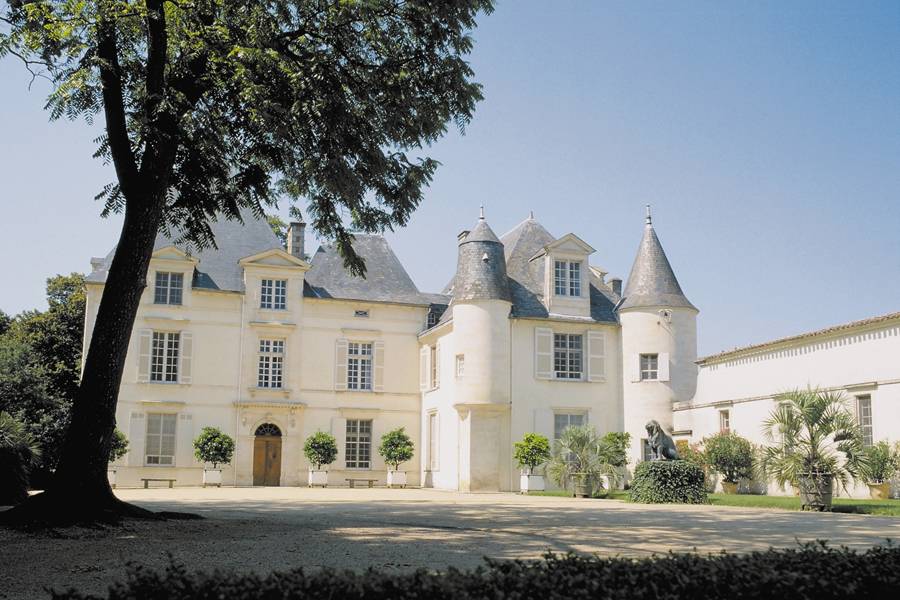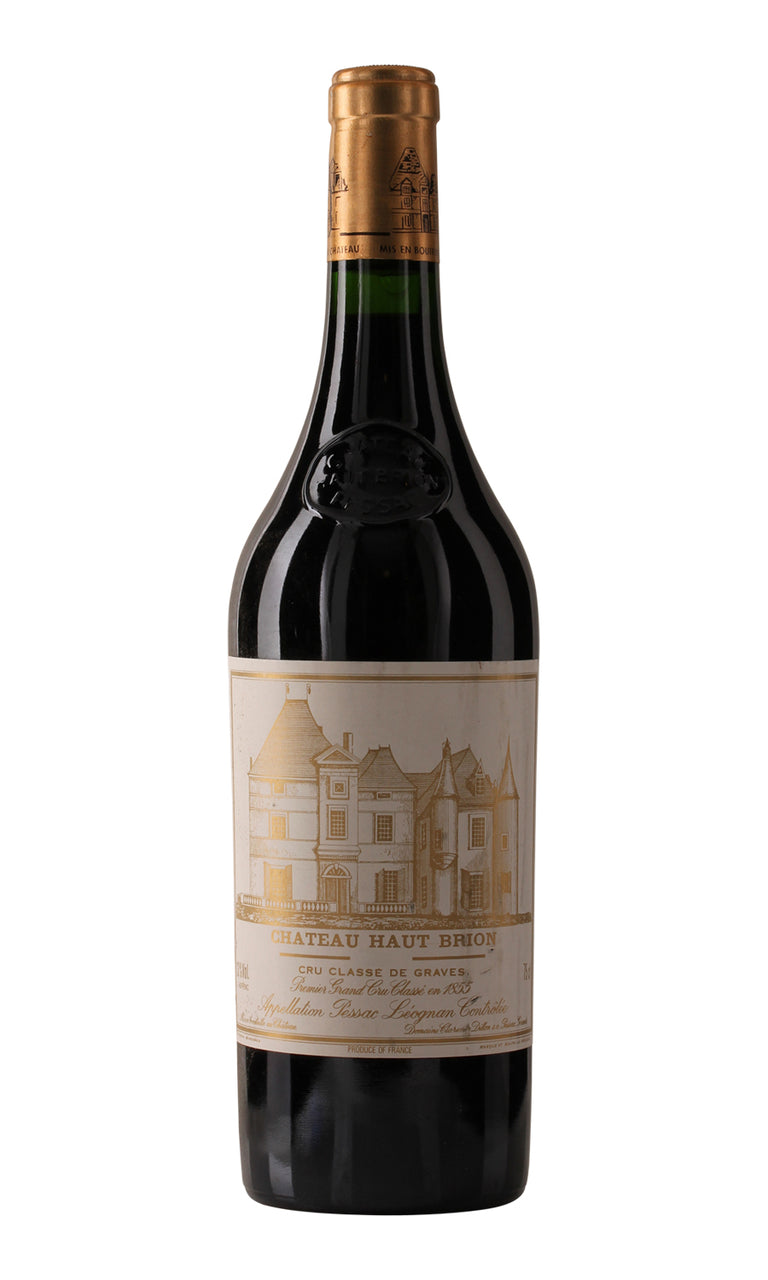- Colour Red
- Producer Château Haut-Brion
- Region Pessac-Léognan
- Drinking 2020 - 2050
- Case size 12x75cl
- Available Now
2000 - Ch Haut Brion 1er Cru Pessac-Léognan - 12x75cl
- Colour Red
- Producer Château Haut-Brion
- Region Pessac-Léognan
- Drinking 2020 - 2050
- Case size 12x75cl
- Available Now
Select pricing type
Need help? Call +44 (0)20 7793 7900 or email wine@goedhuiswaddesdon.com.
-
Neal Martin, July 2016, Score: 99+
...
-
Robert Parker, June 2010, Score: 99
Its bigger sister, the 2000 Haut-Brion (a blend of 51% Merlot, 43% Cabernet Sauvignon, and the rest Cabernet Franc) showed incredibly at the tasting, and for me is one of the three or four most prodigious wines of the vintage. A compelling nose of roasted herbs, scorched earth, sweet blueberries, plums, black currants, and a hint of graphite is followed by a deep, layered, sumptuously textured, full-bodied Haut-Brion, but one with extraordinary complexity. This wine seems more evolved and approachable than I had expected it to be at age 10. My window of maturity seven years ago was 2012-2040, but I would change that to 2010-2050. Haut-Brion can be among the trickiest Bordeaux to taste young, often needing a full decade before the extraordinary complexity that marks this terroir begins to emerge. I was thrilled to see how well both the second wine, Bahans Haut-Brion, and Haut-Brion performed in this tasting, and both scores are slight upgrades.
-
Robert Parker, April 2003, Score: 98
It will always be tempting to compare the 2000 Haut-Brion with the perfect 2000 La Mission Haut-Brion. However, it is not as fat, unctuous, flamboyant, or voluminous as La Mission. Yet, like a great diplomat, it is a wine of intensity, authority, and measured restraint. A supremely elegant offering, its dense ruby/purple color, and burgeoning perfume of scorched earth, liquid minerals, plums, black currants, cherries, lead pencil, and subtle spicy oak are followed by a delicate yet powerfully flavorful, multi-layered, highly nuanced, and extraordinarily pure and seamless wine. There have been so many recent classics from Haut-Brion, it is premature to suggest the 2000 is better than the 1998, 1995, 1990, or 1989, but it is certainly a prodigious wine of dazzling persistence, length, and complexity. A blend of 51% Merlot, 42% Cabernet Sauvignon, and 7% Cabernet Franc, it should prove to be uncommonly long-lived, even by the standards of Haut-Brion. Anticipated maturity: 2012-2040.
-
Jancis Robinson, February 2005, Score: 19
Refined, tautly wound wine that was very embryonic when tasted at the end of March (much more so than La Mission). Lots of alcohol and ripeness hidden underneath quite inky tannins which are apparently lower by analysis than La Missions but which taste more obtrusive because Haut Brion's fruit is much more severe and subtle for the moment. Mineral and meaty for the moment. 43% Cabernet Sauvignon, 51% Merlot, 6% Cabernet Franc. Pale. Quite light colour as usual with some evolution at the rim. Ripe. Slightly hard with lots of acidity. Dried brick essence. Dancing and prancing. Rather Lafite-like. Not the biggest. Thick and chewy. Definitely lighter than La Mission. Refreshing, but not desperately impressive. Great reverberating persistence. Quite syrupy on the finish - a sore throat cure? Drink 2010-2030
-
Clive Coates, June 2001
51% Merlot, 43% Cabernet Sauvignon, 6% Cabernet Franc. 53 hl/ha. Very good colour. Less accessible than La Mission Haut-Brion. Very fine concentration. Very complex flavours. A real cornucopia of fruits, nuts and spices. Full body. Very fine tannins. Marvellous harmony and multi-dimensionalflavours. Very, very lovely fruit. This is a really super wine. Really distinguished. From 2012+.
-
Neal Martin, June 2021, Score: 98
The 2000 Haut-Brion has long been one of my favorite wines of this vintage, and at 21 years old it remains a tour de force. Blackberry, briar, black olive, incense and earthenware feature on the nose, which displays wonderful definition and so much personality. The palate is medium-bodied with a mixture of red and black fruit, white pepper, clove and graphite. It just sashays along, fresh and vital, revealing enormous, breathtaking depth on the finish. This has certainly mellowed over the last five or six years, but the bottom line is that you will be hard pushed to find a better millennial Bordeaux. Brilliant. 13.2° alcohol.
-
Neal Martin, September 2022, Score: 98
The 2000 Haut-Brion has the upper hand over La Mission at the moment, and I don't see that changing. It's always been one of my favourite wines of the vintage. Blackberry and black olive, copious incense and terracotta notes almost hypnotize the senses. The palate is supremely well-balanced with finely sculpted tannins that frame the black fruit laced with white pepper and graphite. It's just entering its drinking window but has the substance to last many years. Tasted at the château.
Producer
Château Haut-Brion
Arguably the oldest recognised Bordeaux grand cru, Haut Brion has been owned by the American Dillon family since 1935. The Château was an early moderniser - the first estate to implement steel vats in 1961 - and over the years, their incredible investments have re-established the inherent quality of this property, enabling it to emerge as possibly the most consistent first growth since the 1980s. Situated in Pessac-Léognan ...Read more
Arguably the oldest recognised Bordeaux grand cru, Haut Brion has been owned by the American Dillon family since 1935. The Château was an early moderniser - the first estate to implement steel vats in 1961 - and over the years, their incredible investments have re-established the inherent quality of this property, enabling it to emerge as possibly the most consistent first growth since the 1980s. Situated in Pessac-Léognan in Graves, the estate is the only classified growth located outside the Médoc. Château Haut Brion has the most Merlot and the most Cabernet Franc of any of the First Growths and the second wine is Le Clarence de Haut-Brion, known as Ch Bahans Haut Brion prior to 2007.Read less

Region
Pessac-Léognan
Stretching from the rather unglamorous southern suburbs of Bordeaux, for 50 km along the left bank of the river Garonne, lies Graves. Named for its gravelly soil, a relic of Ice Age glaciers, this is the birthplace of claret, despatched from the Middle Ages onwards from the nearby quayside to England in vast quantities. It can feel as though Bordeaux is just about red wines, but some sensational white wines are produced in this area from a blend of sauvignon blanc, Semillon and, occasionally, muscadelle grapes, often fermented and aged in barrel. In particular, Domaine de Chevalier is renowned for its superbly complex whites, which continue to develop in bottle over decades. A premium appellation, Pessac-Leognan, was created in 1987 for the most prestigious terroirs within Graves. These are soils with exceptional drainage, made up of gravel terraces built up in layers over many millennia, and consequently thrive in mediocre vintages but are less likely to perform well in hotter years. These wines were appraised and graded in their own classification system in 1953 and updated in 1959, but, like the 1855 classification system, this should be regarded with caution and the wines must absolutely be assessed on their own current merits.




